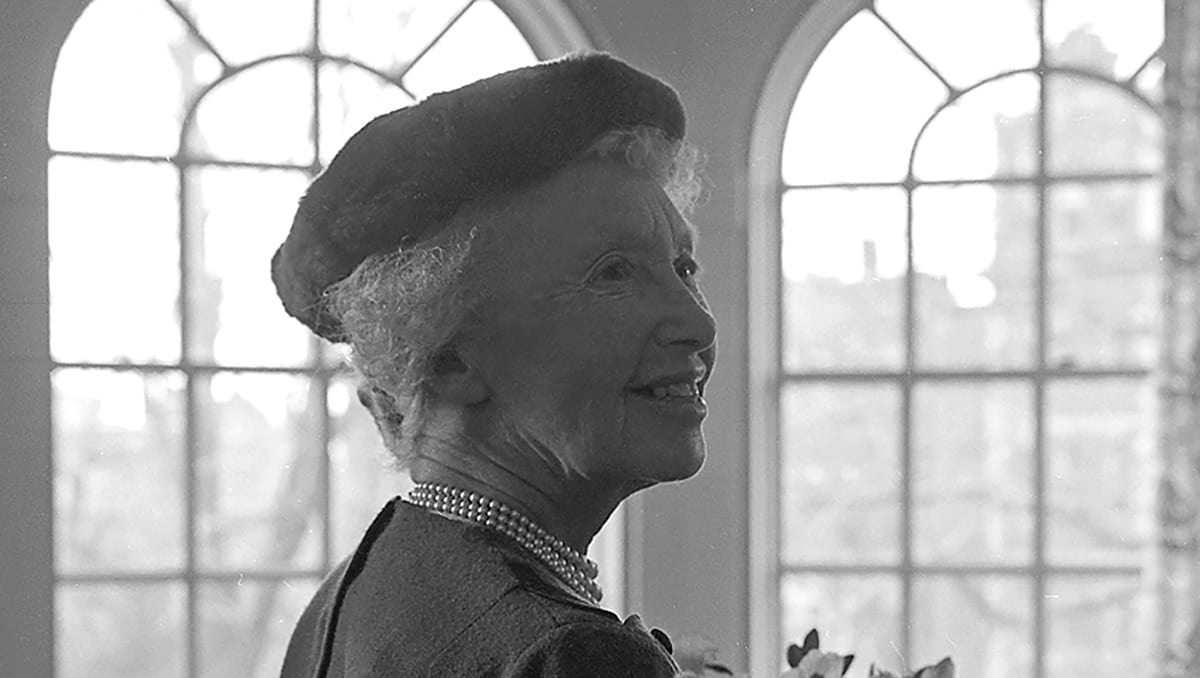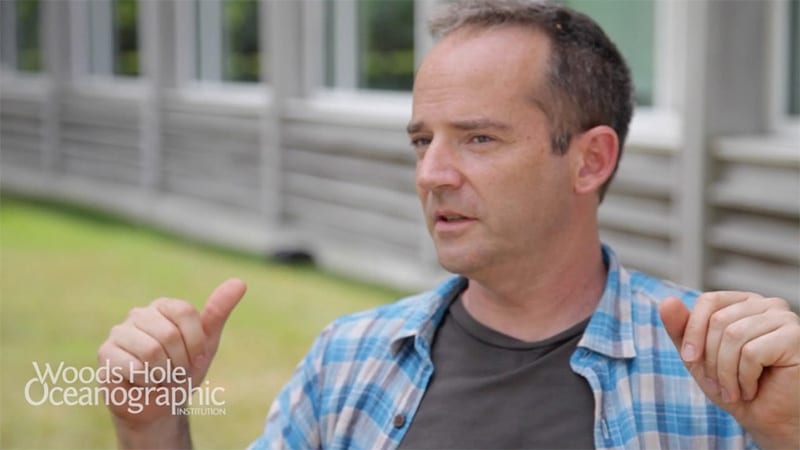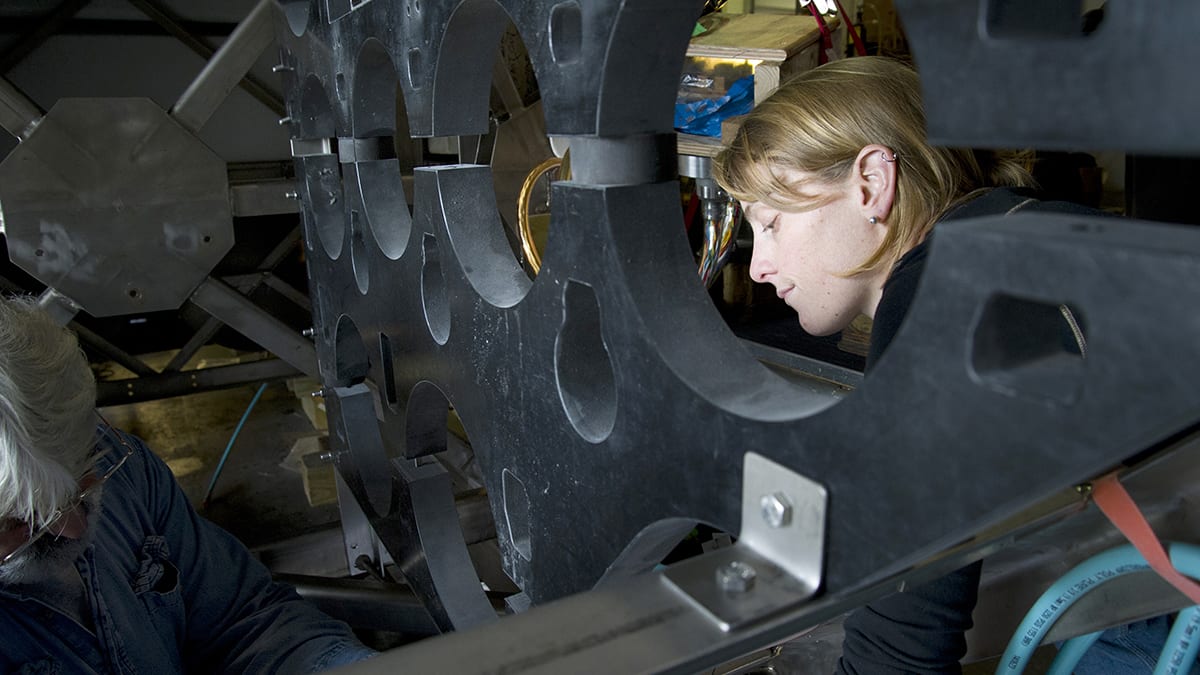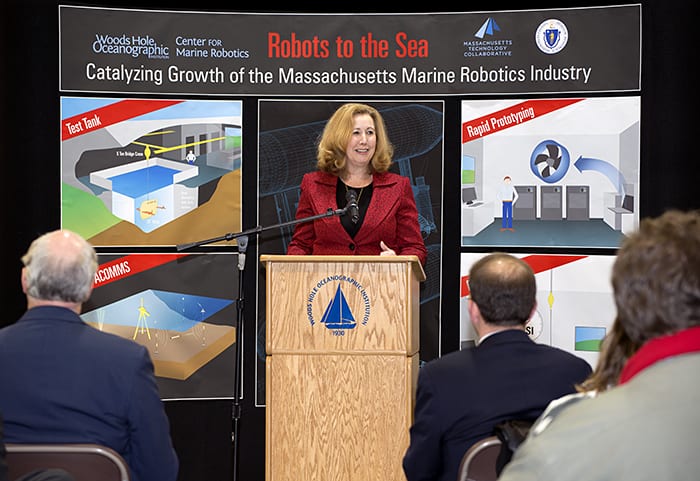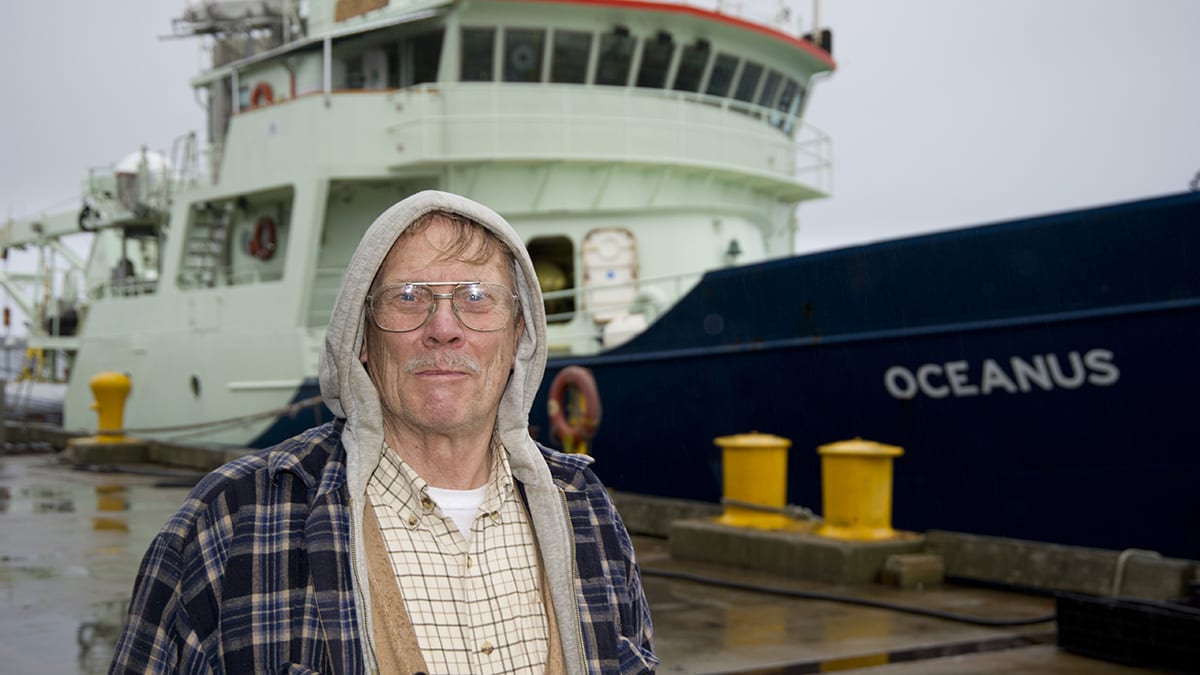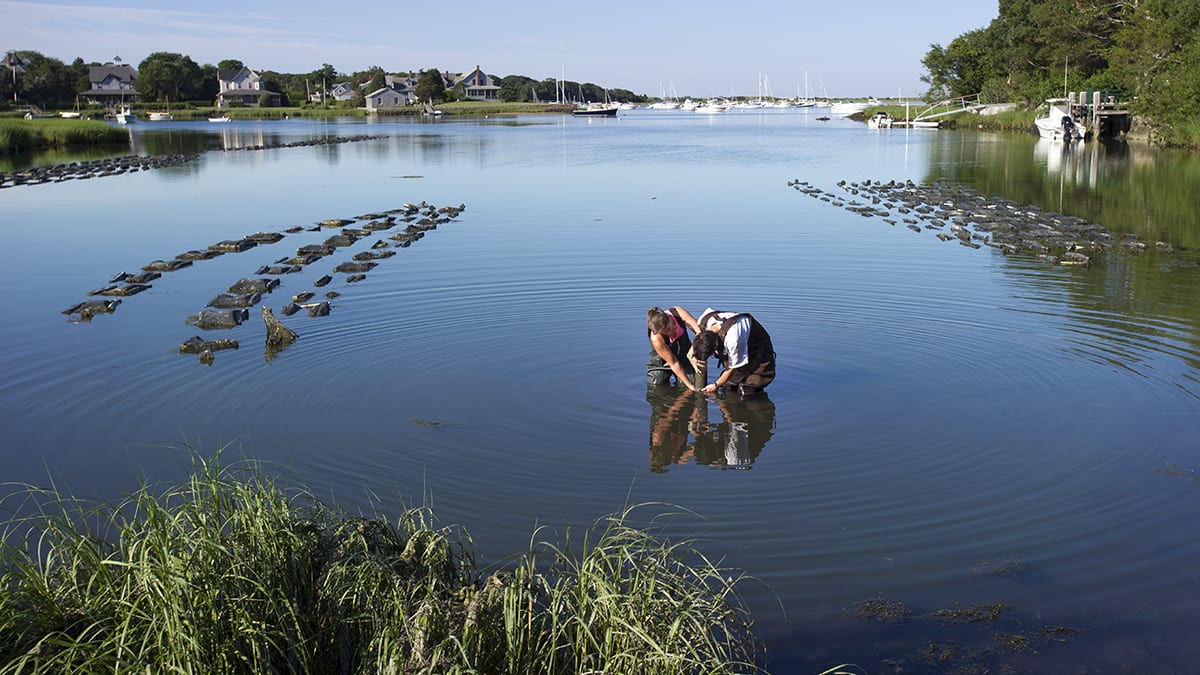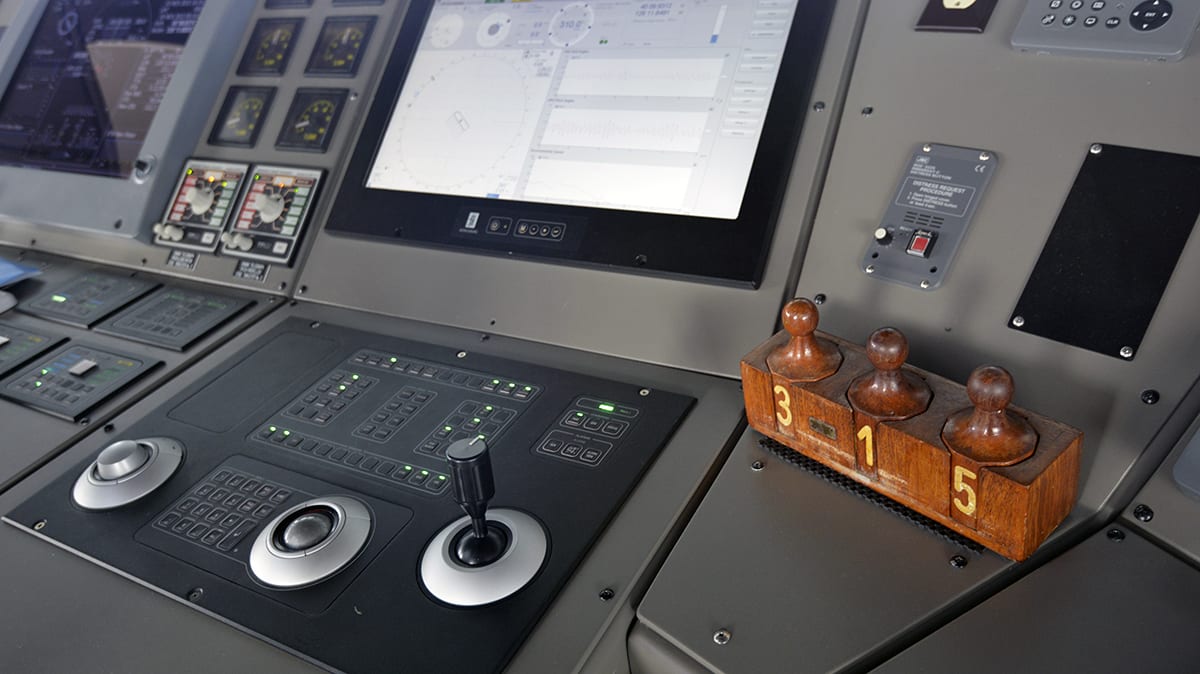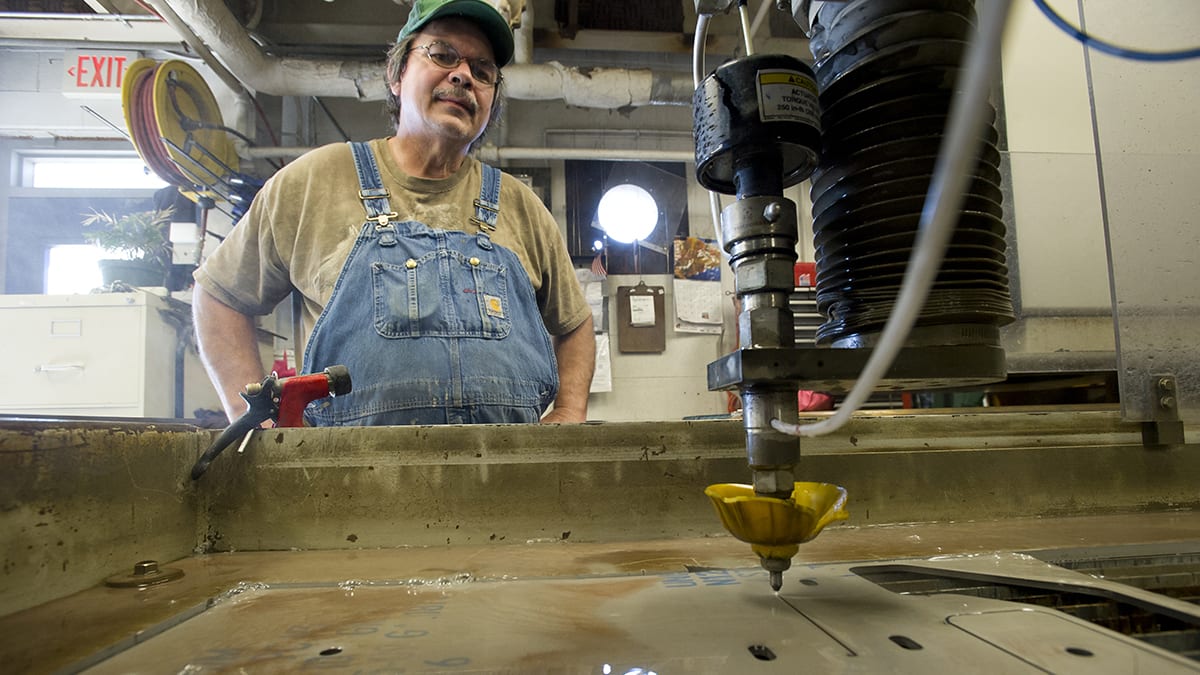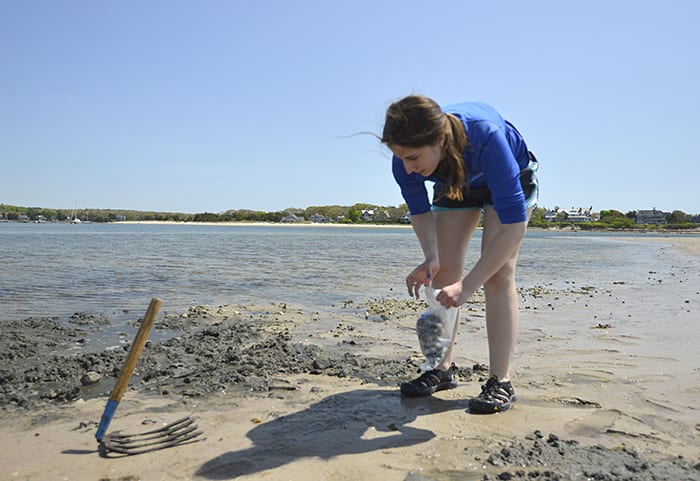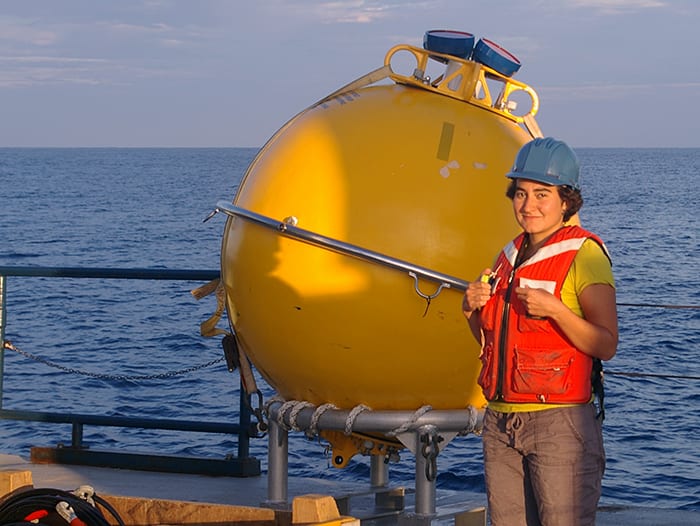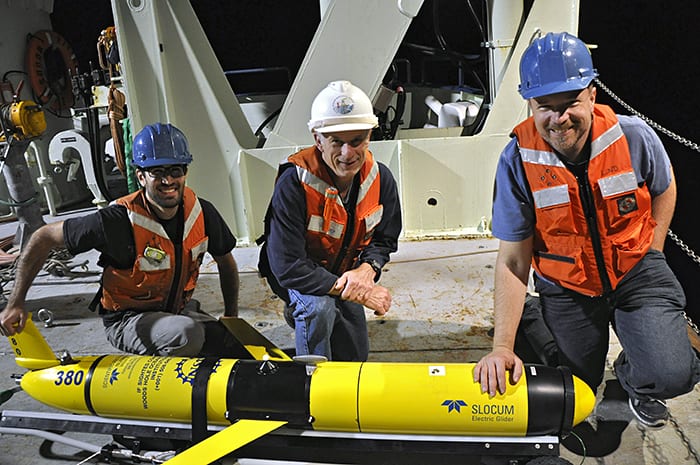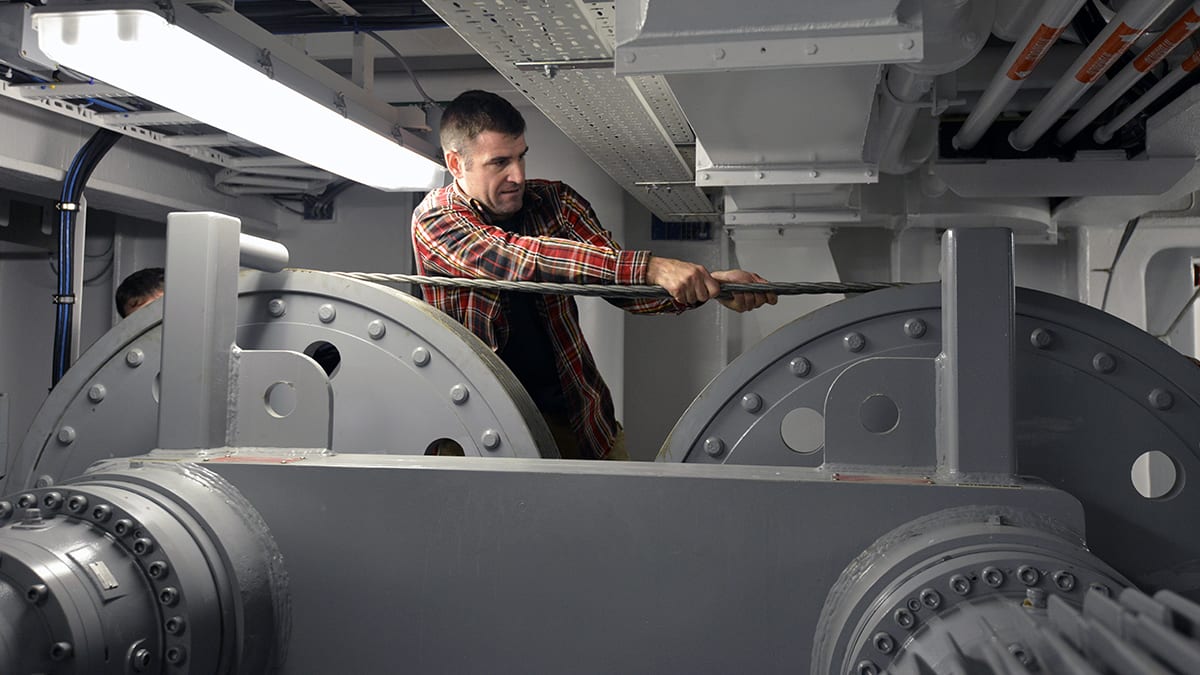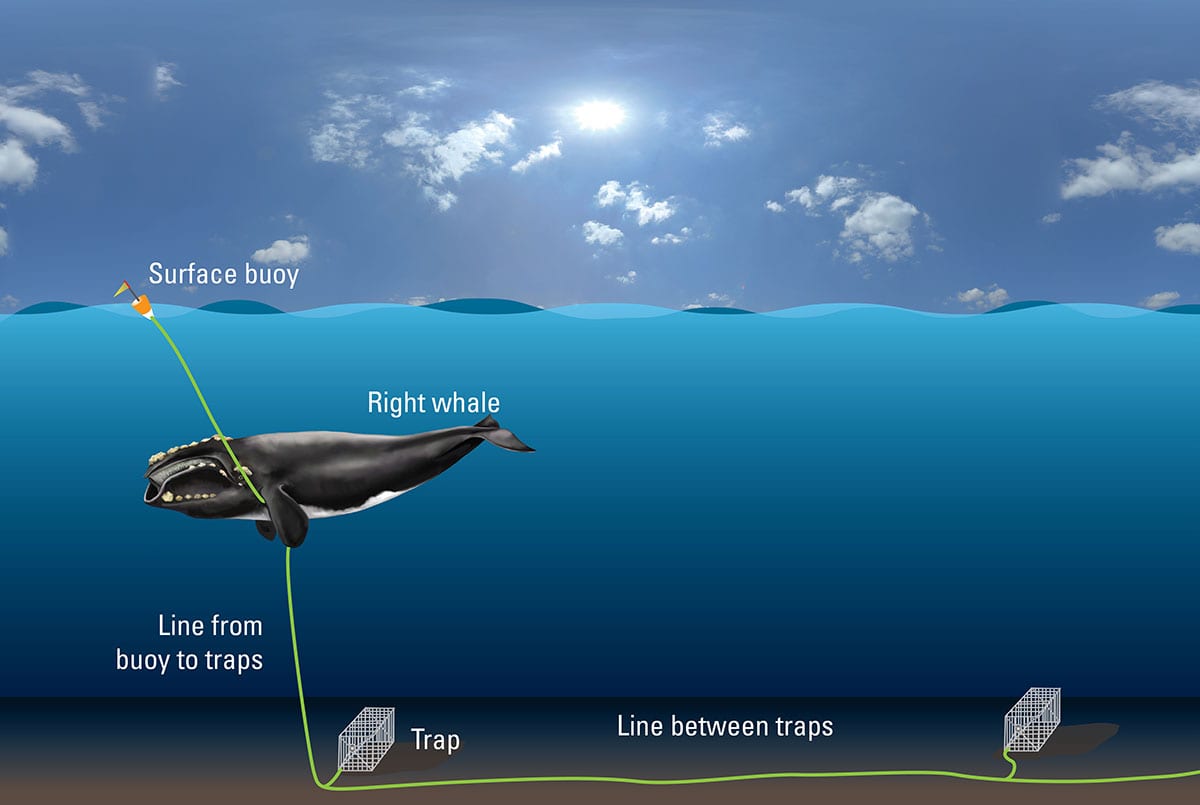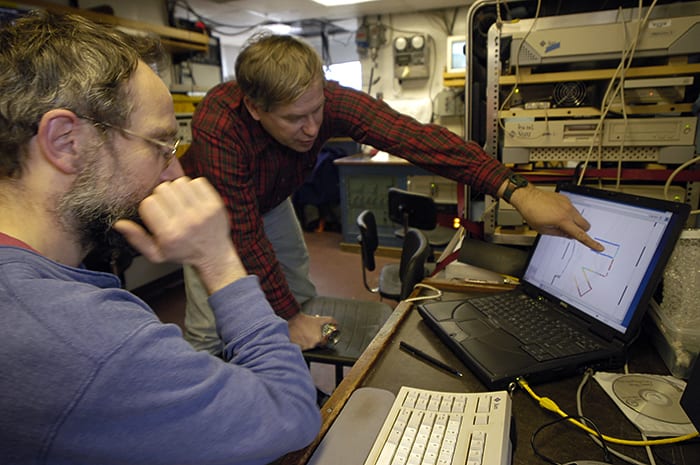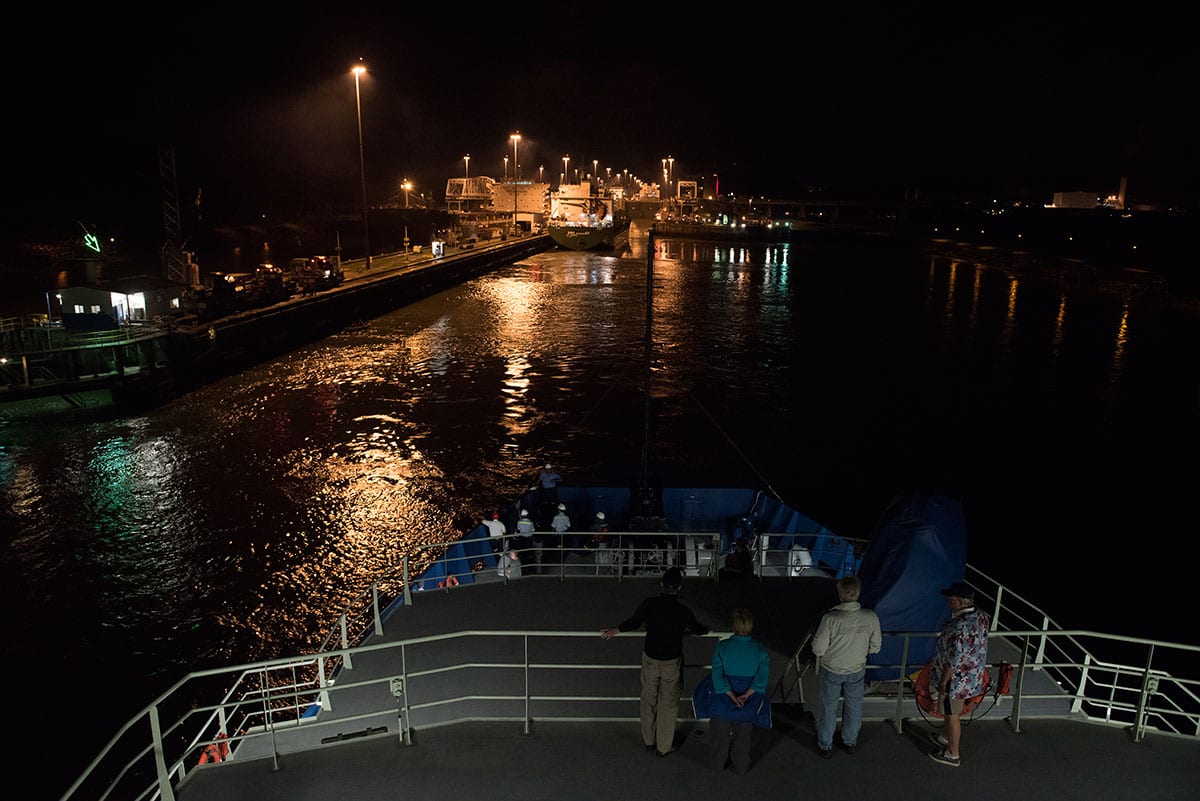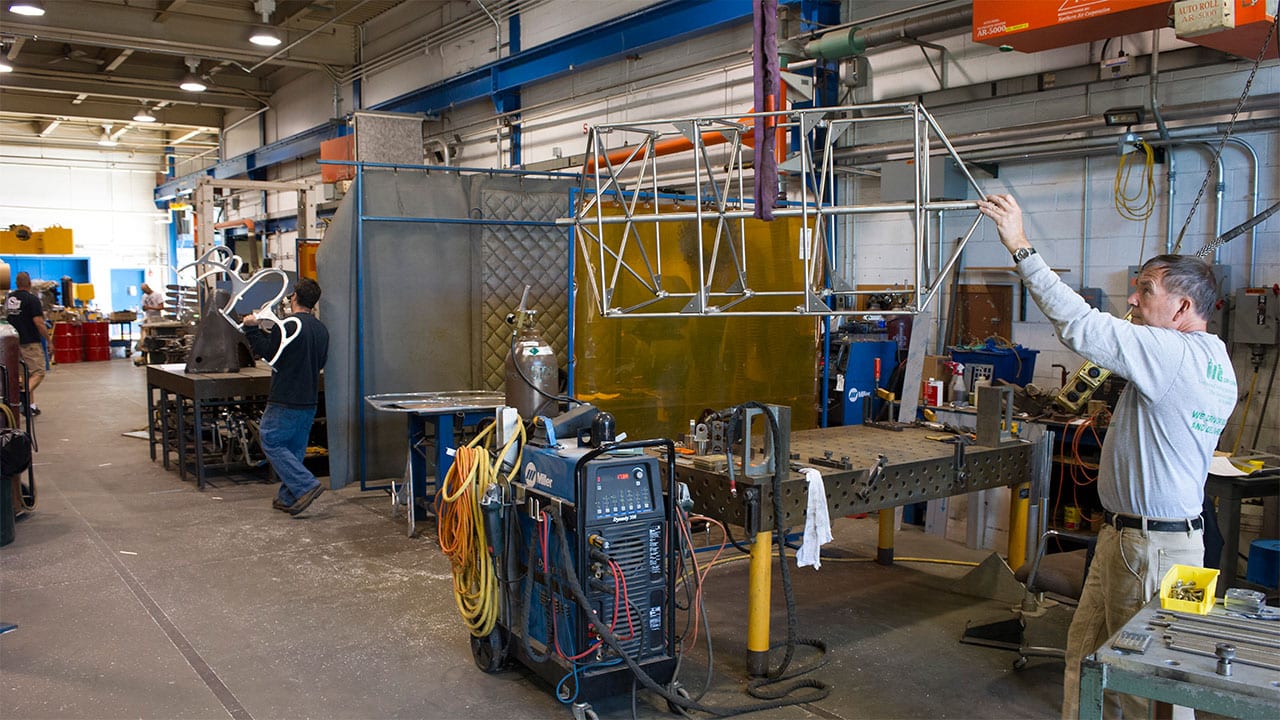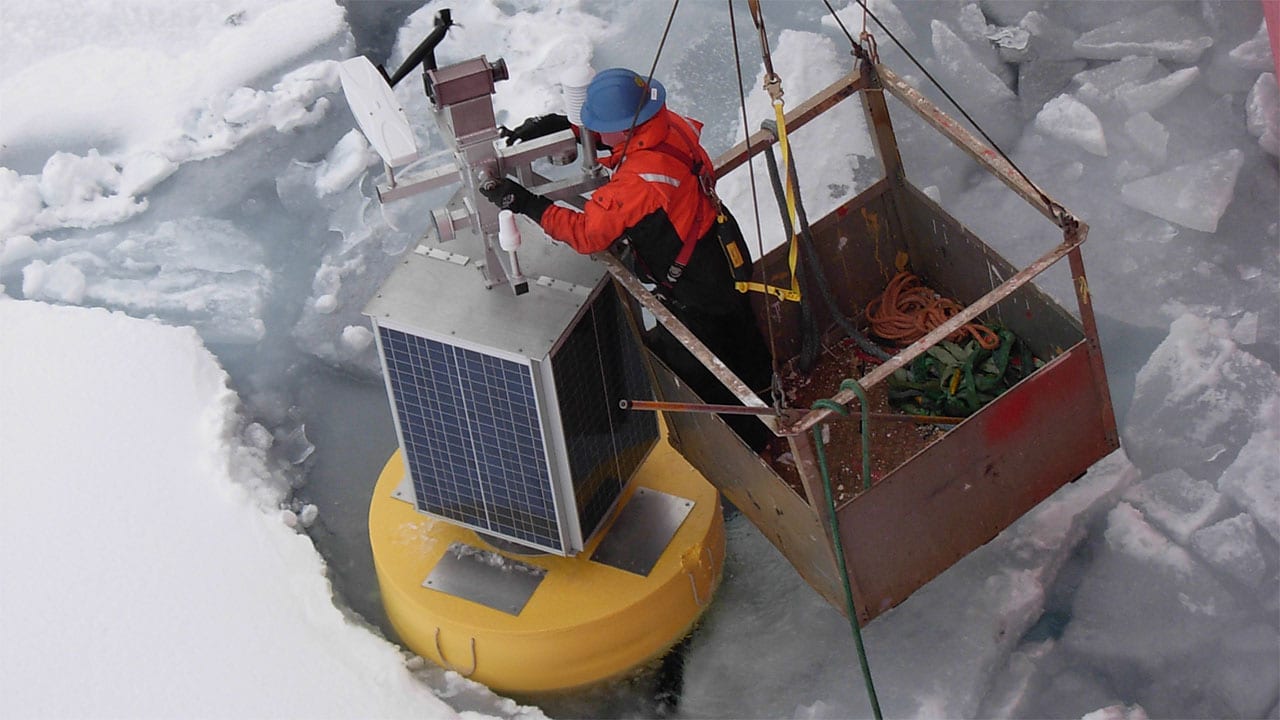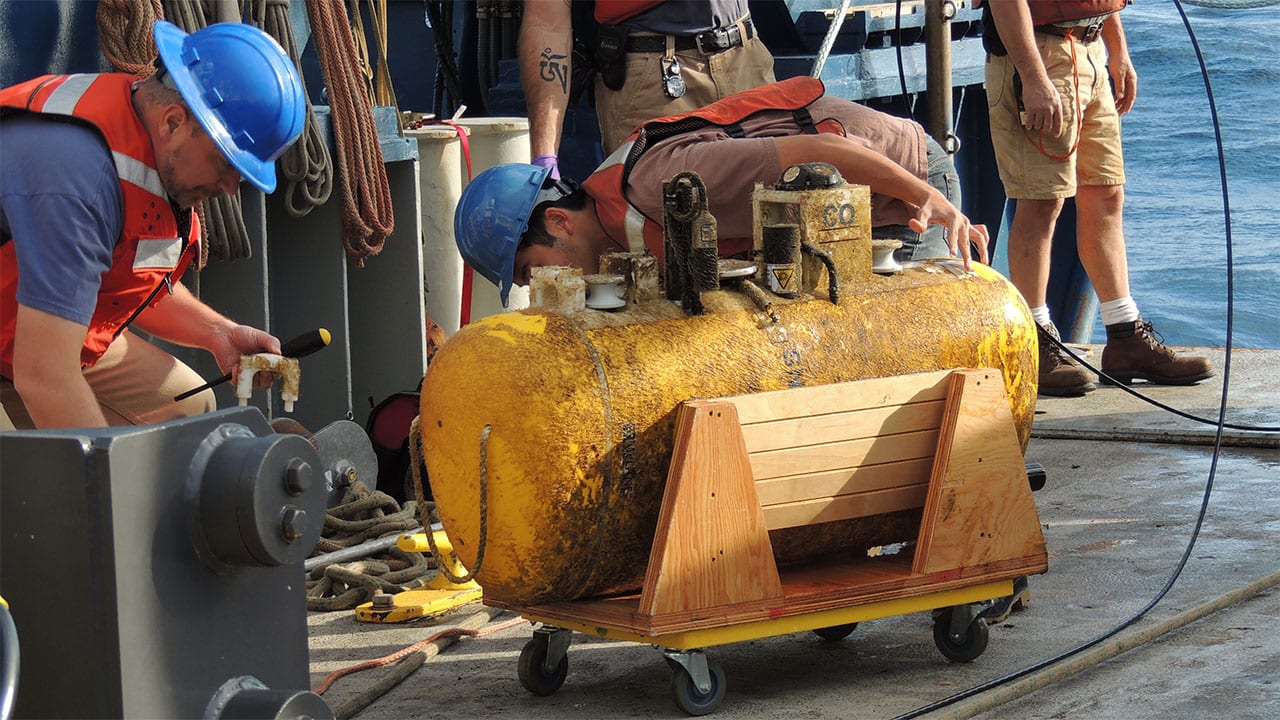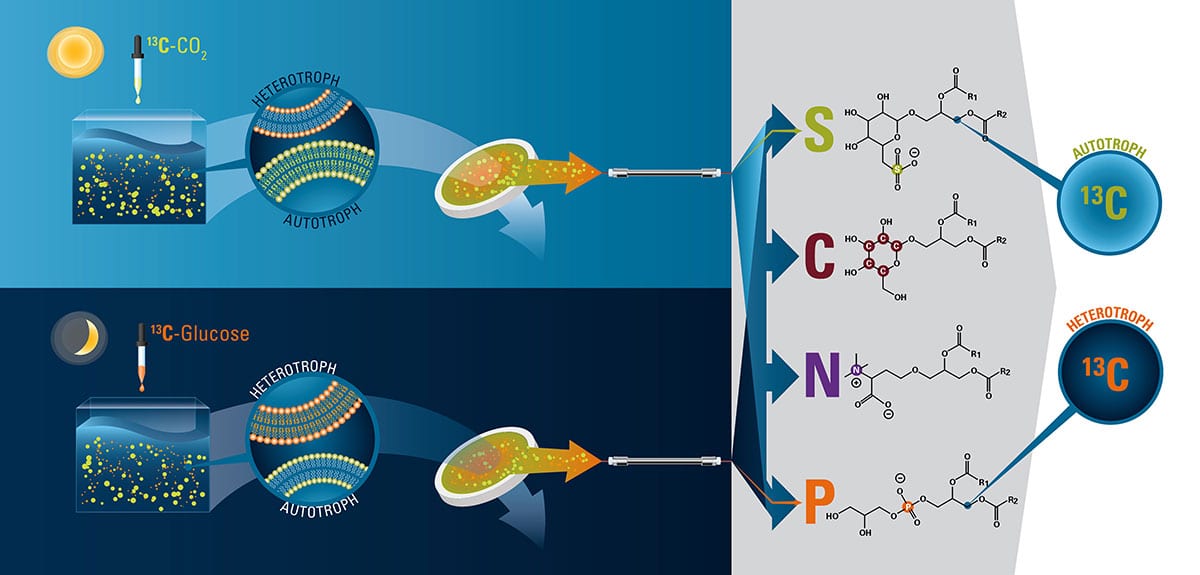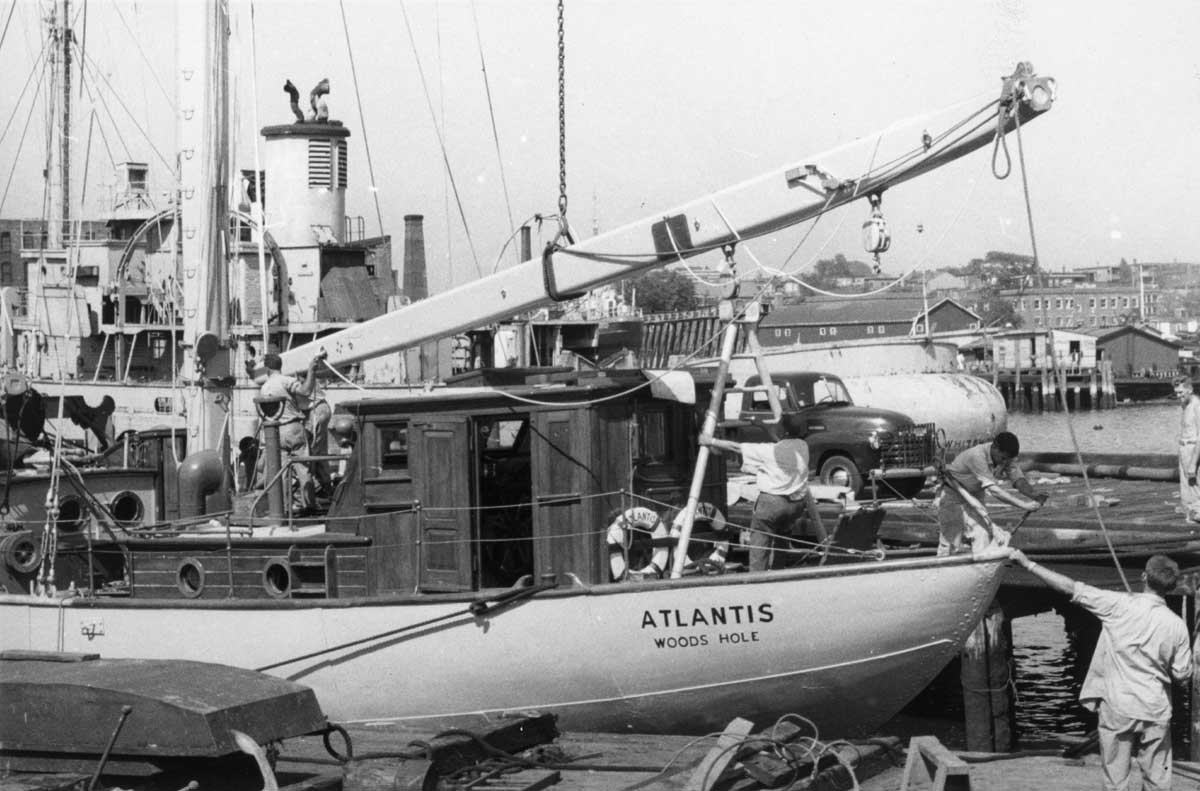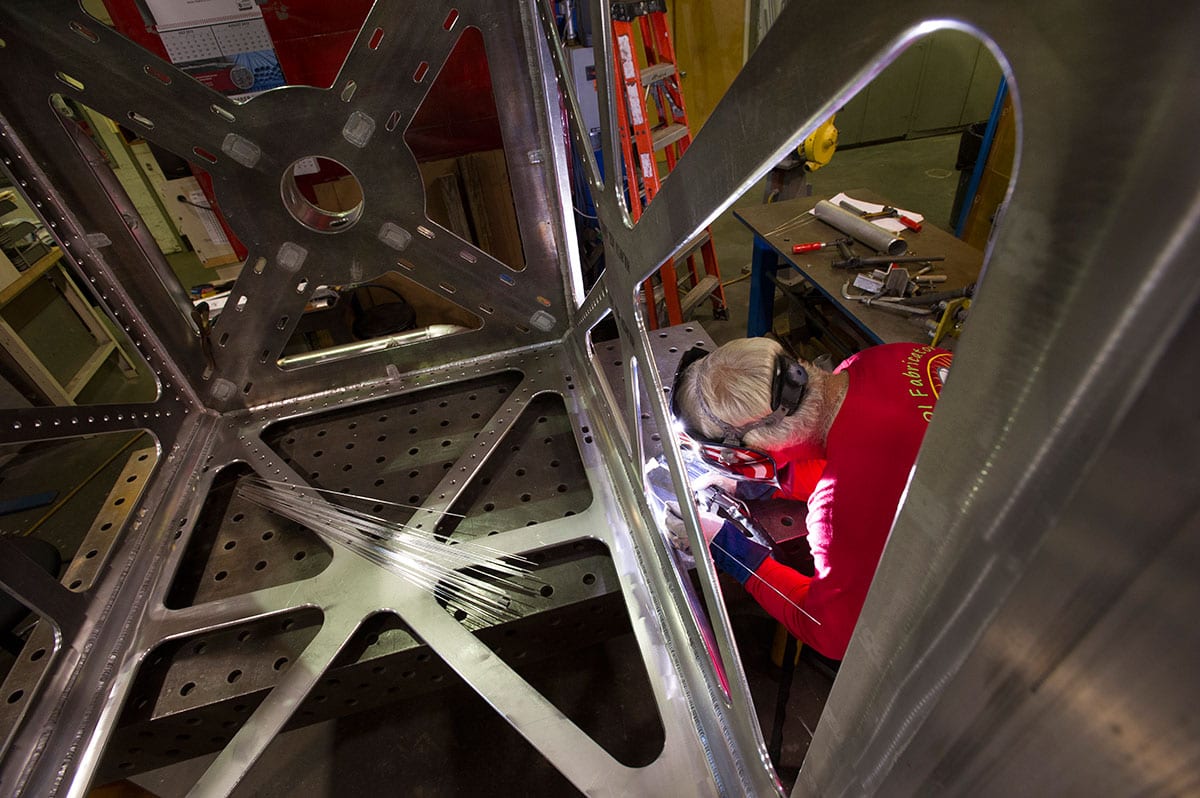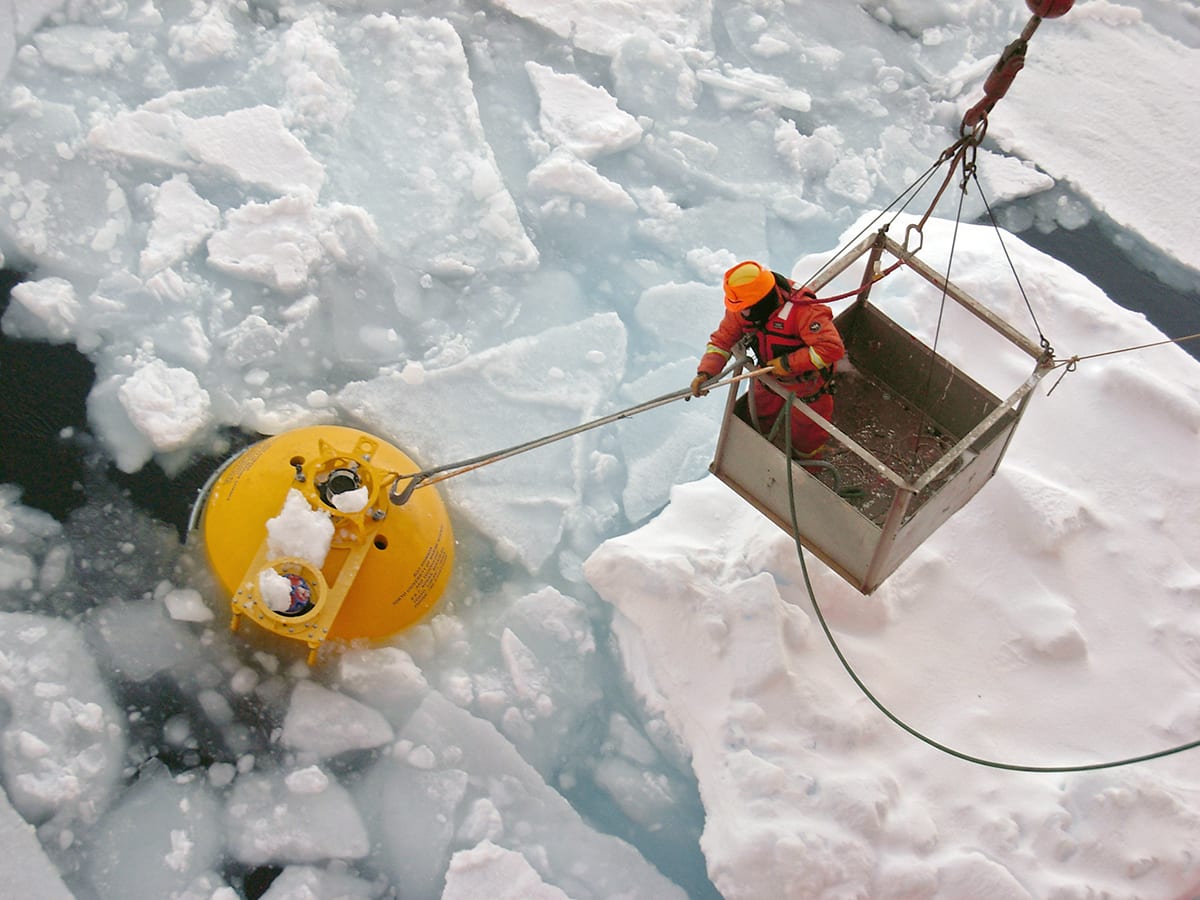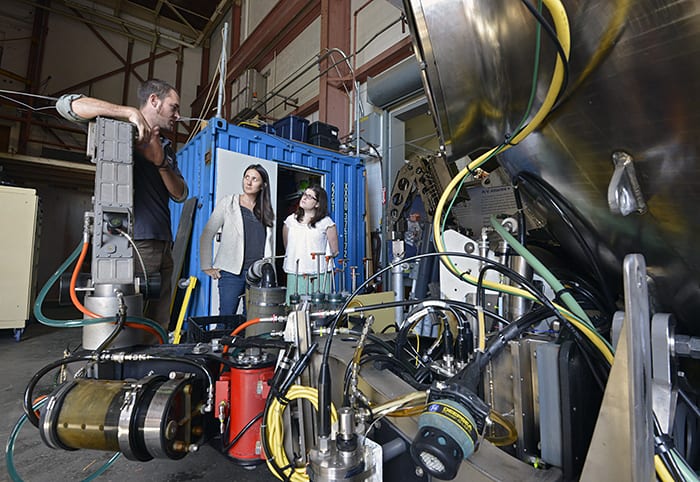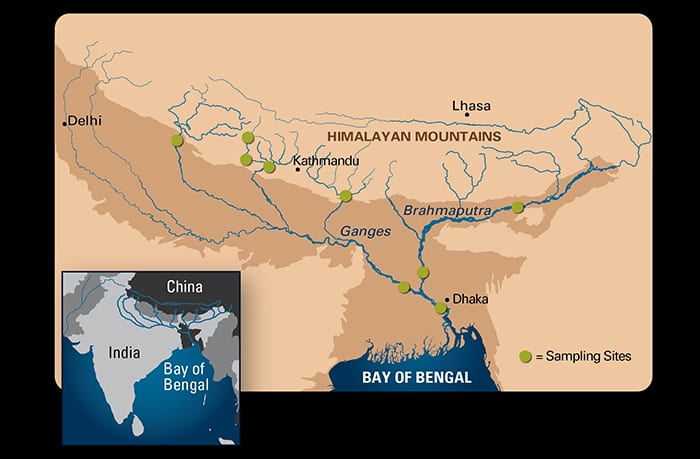Multimedia Items
An Adventurous Life
This photo of Elizabeth Bigelow, wife of founding director of WHOI Henry Bigelow, was taken more than 60 years ago. The Bigelows were wed in 1906, a marriage that […]
Read MorePlastic in the Ocean
Plastics constitute the single most common form of debris in the ocean and the volume is growing every year. WHOI microbiologist Tracy Mincer discusses the impacts of plastic marine debris–and […]
Read MoreRack ’em Up
Engineer Loral O’Hara designed new racks to carry equipment on the upgraded Alvin, the nation’s deep-diving human-occupied research submersible. The racks hold pressure housings—the titanium bottles that house […]
Read MoreAward for Robotics
Speaking at WHOI in December 2014, Pamela Goldberg, CEO of the Massachusetts Technology Collaborative (MTC), had high praise for WHOI’s Center for Marine Robotics (CMR) and its potential […]
Read MoreLooking Ahead
Over the course of nearly six decades at WHOI, Hartley Hoskins has been an integral part of the Institution’s fabric. He sailed on R/V Oceanus when the ship was […]
Read MoreSummer Sampling
WHOI summer student fellow Claudia Mazur (left), of Mount Holyoke College, and guest student Alec Cobban, of Dartmouth College, sampled sediments in West Falmouth Harbor in August 2015. Both […]
Read MoreTraditions
The heading blocks that tell watchstanders on R/V Neil Armstrong the direction the ship is supposed to be traveling share a console with the slightly higher tech dynamic positioning […]
Read MoreA Cut Above
WHOI machinist Timothy Kling cuts titanium into a component for the frame of the upgraded Alvin, the nation’s deep-diving human-occupied research submersible. He is using a water […]
Read MoreRaking it In
A clam rake is the instrument of choice for MIT-WHOI joint program student Megan May as she hunts for clams at Little Island Beach in Falmouth. May is using genetic […]
Read MoreCurrent Monitor
Gliding Away
Wired Right
Derek Bergeron, relief chief mate for R/V Neil Armstrong, helped change wires while testing the main traction winch during the ship’s inaugural voyage from Anacortes, Washington to San Francisco […]
Read MoreTangled Up
Sea Level Link
WHOI research specialist Frank Bahr (left) and physical oceanographer Glen Gawarkiewicz analyze data on currents collected off Cape Hatteras. Gawarkiewicz studies the Read More
Get On Board
WHOI friends and supporters aboard the R/V Neil Armstrong during the ship’s 2015 inaugural trip, watched […]
Read MoreMooring in the Making
WHOI welder and fabricator Paul Keith assembles a stainless steel cage for an acoustic modem that will be installed on an Ocean Observatories Initiative (OOI) sub-surface flanking mooring in […]
Read MoreIcy Recovery
John Kemp of the WHOI Mooring Operations, Engineering and Field Support Group is lowered in a crane-operated basket from the Canadian Coast Guard Ship Louis S. St. Laurent in […]
Read MoreProfiler Swap
Biofouling can be a serious problem for oceanographic equipment that spends any amount of time at the surface or in the upper ocean and was one of the reasons […]
Read MoreMicrobe ID
First in Line
Built Right
Tony Delane, WHOI welder and fabricator, assembles the lower frame of a coastal surface mooring. The WHOI Mechanical Shop routinely designs and assembles the platforms and instruments that […]
Read MoreArctic House Call
Crewmember Daryl Tobin from the Canadian icebreaker Louis S. St. Laurent secures a line on a mooring that had been tethered to the seafloor in the Arctic Ocean. The instrument […]
Read More
